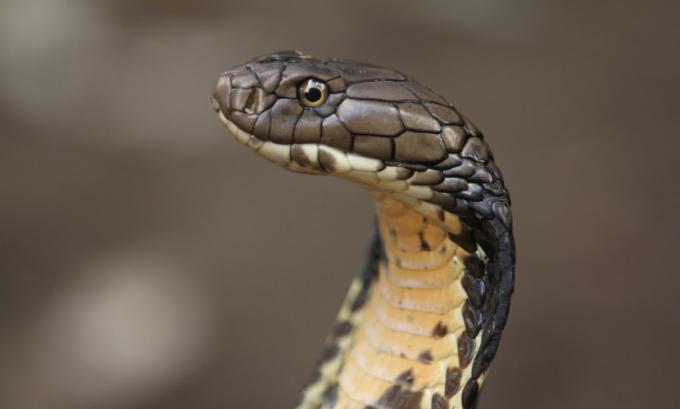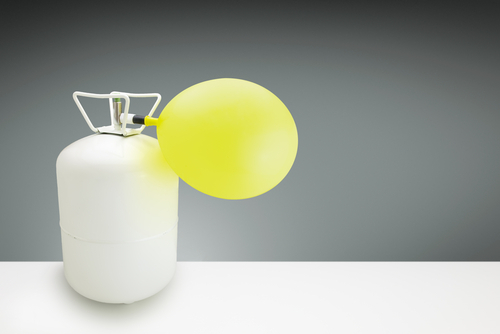Reptile is a term used to refer to animals with thick skin, with lung breathing and that generally lay eggs, like snakes, crocodiles and turtles. The reptile name comes from the Latin reptar, which means “to crawl”, making, therefore, reference to the way of locomotion of some of its representatives. It is currently considered that there are more than nine thousand species of reptiles spread over various parts of the planet, with the exception of the poles. Brazil stands out as having the third greatest wealth in this group of animals in the world.
Read too: Snake or snake? Understand the difference between the terms
General characteristics of reptiles
reptiles are amniote animals, tetrapods and ectotherms. We give the name amniotes to animals that have embryos surrounded by the amniotic membrane, from tetrapods to animals that have four limbs, and from ectothermics to those who are unable to maintain a constant body temperature using their metabolism.
The fact that reptiles are ectothermic animals is the reason they are called animals of
"cold blood" and not being able to live in very cold regions like the poles. To warm up their body, reptiles need to expose themselves to the Sun, and to cool it, they need to hide from it.
Reptile digestive system
Reptiles are animals that have complete digestive system, starting in the mouth and ending in the cloaca — a chamber into which the reproductive and excretory systems and the digestive tract flow. THE food in this group of animals it is quite variable, however most are carnivorous.
The ways of capturing prey also vary between species. Some snakes, for example, have powerful poisons that quickly kill their victim. To swallow large prey, some snakes are able to open their mouths almost 180°. We must also mention the crocodiles, which have the strongest bite in the animal kingdom, and the pythons, which kill their prey by constriction of the body.
Reptile respiratory system
Reptiles are animals that present exclusively pulmonary breathing. Even sea turtles, which spend most of their life in the aquatic environment, have this type of breathing, having to rise to the surface to be able to breathe.
Reptile excretory system
Reptiles present, as organs responsible for excretion, the kidneys. The main product of nitrogen excretion is the uric acid.
Reptile circulatory system
Reptiles are animals that present circulation pair (blood passes twice through the heart to perform a complete circuit), closed (blood runs exclusively inside the vessels) and incomplete (Oxygen-rich blood meets oxygen-poor blood). The heart of reptiles presents some differences within the group itself.
In non-crocodilian reptiles, this organ has two atria and a partially divided ventricle. In crocodilian reptiles, the ventricle is completely divided and, therefore, the heart has four cavities. Despite the four cavities, oxygen-rich blood comes into contact with oxygen-poor blood at the exit of the heart, in a region called Panizza's foramen.
Reptile reproduction
Reptiles are animals that present separate sexes, that is, there are males and females. THE fertilization is internal, and most species lay eggs and are therefore oviparous. It is noteworthy that there are also ovoviviparous and viviparous representatives.
O reptile egg has a thick shell, which is essential to prevent dryness. In addition, it features four extraembryonic membranes: allantoid, chorion, amnion and yolk sac.
The allantoide has the function of storing nitrogenous excreta and acting in gas exchange. The chorion participates in gas exchange. The amnion is a membrane that delimits the amniotic cavity, which is filled with amniotic fluid, which bathes the embryo, ensuring protection against dryness and mechanical shock. Finally, the yolk sac stores nutrients needed for the embryo's development.
Reptile adaptations to the terrestrial environment
Reptiles are considered the first vertebrates definitively occupy the terrestrial environment. These animals achieved this achievement due to a series of important adaptations, such as:
Lung breathing in all group representatives;
Thick epidermis with scales or bony plates, which prevents exaggerated loss of Water by the organism;
Egg with shell that protects the embryo, preventing its desiccation, and reserves, which guarantee nutrition;
Internal fertilization in all representatives, thus avoiding the desiccation of gametes.
reptile classification
Reptiles can be classified into four groups:Testudines (turtles and tortoises), squamata (lizards and snakes),crocodylia (crocodiles and alligators) andRhynchocephalia (Tuatara).
Testudines

Testudines or chelonians are a group of reptiles that include the turtles, tortoises and turtles. In these animals, the outstanding feature is the presence of a hull. The dorsal portion of the hull is named carapace, while the ventral part is called cravat. The hoof is important to ensure protection for the animal's body. US testudines, the teeth are absent, and the presence of a horny beak resistant that helps the animal in its feeding.
Read too: Differences between turtle, tortoise and tortoise
squamata

squamata or scaly they are a group of reptiles that, as their name indicates, have their bodies covered with scales. This group includes the snakes and the lizards. Snakes are very feared animals, mainly due to the fact that some species have powerful and even lethal venoms. The taipan-do-interior, for example, is a snake that has a venom capable of killing more than 100 people. However, many snakes do not have poisons, such as the boa constrictor, which kills its prey by constriction.
It is worth noting that it is not only snakes that have venom. O Komodo dragon, a species of lizard, also has venom glands. For a long time, it was believed that the Komodo dragon's bite caused its prey to die due to the amount of bacteria present in its mouth, but recent research has shown that it is also capable of producing poison.
crocodylia

Crocodilians include crocodiles and alligators. These animals live in regions with a higher temperature and that, generally, have a great amount of rain or rivers, lakes, estuaries and shallow seas. These animals have a lizard-like body, elongated skull and a very strong bite, which easily crushes the bones of its prey. Crocodilians generally capture their prey through ambush.
Read too: Difference between crocodile and alligator
Rhynchocephalia

Rhynchocephaliais a group of reptiles that, unlike the other groups studied, presents just a representative, known as tuatara. These animals only live in New Zealand. They have about 50 cm in length and a food that includes insects, eggs and small lizards.



